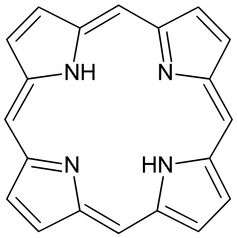New cancer-hunting 'nano-robots' to seek and destroy tumours

It sounds like a scene from a science fiction novel – an army of tiny weaponised robots travelling around a human body, hunting down malignant tumours and destroying them from within.
But research in Nature Communications today from the University of California Davis Cancer Centre shows the prospect of that being a realistic scenario may not be far off. Promising progress is being made in the development of a multi-purpose anti-tumour nanoparticle called "nanoporphyrin" that can help diagnose and treat cancers.
Cancer is the world's biggest killer. In 2012, an estimated 14.1 million new cancer cases were diagnosed and around 8.2 million people died from cancer worldwide.
This year, cancer surpassed cardiovascular diseases to become the leading cause of death in Australia; 40,000 Australians died as a result of cancer last year. It's no wonder that scientists explore every possible technology to efficiently and safely diagnose and treat the disease.
Nanotechnology is one such revolutionary cancer-fighting technology.
Nanotech: a big deal
A nanometre is a very small unit of length, just one billionth of a metre. Nanotechnology looks at building up incredibly tiny, nano-level structures for different functions and applications.
One such nanoparticle-based application is the development of precise cancer diagnostic technology and safe, efficient tumour treatment. The only problem is nanoparticles must be tailored to specific jobs. They can be time-consuming and expensive to research and build.
So how do nanoparticles work? They can be made using inorganic or organic components. Each has different properties:
- Inorganic nanoparticles often have unique properties that make them useful in applications such as fluorescence probes and magnetic resonance imaging tumour diagnoses;
- "Soft" organic nanoparticles are the best drug-delivery carriers for tumour treatment, due to their biocompatibility, ability to be chemically modified and their drug-loading capacity. A few "soft" organic nanomedicines including Genexol-PM (paclitaxel-loaded polymeric micelles), Doxil (liposomal doxorubicin) and Abraxane (paclitaxel-loaded human serum albumin nanoaggregate) have been approved or are in clinical trials for the treatment of human cancers.
The new organic nanoparticle – nanoporphyrin – can do all this.
Ins and outs of nanoporphyrin
Nanoporphyrin is only 20-30 nanometres in size. If you want to get technical, it's a self-assembled micelle consisting of cross-linkable amphiphilic dendrimer molecules containing four porphyrins.

If you want to get less technical, it's a loosely bound group of molecules (or "micelle") with their hydrophilic ("water-loving") heads pointing outwards and their hydrophobic ("water-hating") tails pointing inwards. Each molecule contains organic compounds called porphyrins. Porphyrins can occur naturally, the best-known being heme, the pigment in red blood cells.
Nanoporphyrin's small size gives it an intrinsic advantage as it can be engulfed by and accumulate in tumour cells, where it can act on two levels:
- On the molecule level, nanoporphyrin can aid diagnosis by enhancing the contrast of tumour tissue in magnetic resonance imaging (MRI), positron emission tomography (PET) and dual modal PET-MRI. (Again, this is a bit technical, but if you're interested, porphyrin acts as a ligand, which chelates with imaging agent metal ions such as gadolinium (III) or ⁶⁴copper (II).)
- on the micelle level, nanoporphyrin can be loaded with anti-tumour drugs to kill malignant tissue. When activated, for example, it can generate heat to "cook" the tumour tissue, and release lethal reactive oxygen species (ROS) at tumour sites.
Discover the latest in science, tech, and space with over 100,000 subscribers who rely on Phys.org for daily insights. Sign up for our free newsletter and get updates on breakthroughs, innovations, and research that matter—daily or weekly.
Armed and dangerous (to tumours)
Functional nanoparticle processes can be similar to those of an armed nano-robot. For example, when a tumour-recognition module is installed in a delivery nano-robot (organic particle), the armed drug-loaded nano-robot particles can target and deliver the drug into tumour tissue. They kill only those cells, while being harmless to surrounding healthy cells and tissues.
If a tumour-recognition module is installed in a probe nano-robot (inorganic particle), the armed nano-robot particles can get into tumour tissue and activate a measurable signal to help doctors better diagnose tumours.
It has been a huge challenge to integrate these functions on the one nanoparticle. It's difficult to combine the imaging functions and light-absorbing ability for phototherapy in organic nanoparticles as drug carriers. This has, until now, hampered development of smart and versatile "all-in one" organic nanoparticles for tumour diagnosis and treatment.
The production of nanoporphyrin is an efficient strategy in the development of multifunctional, integrated nanoparticles. The same strategy could be used to guide further versatile nanoparticle platforms to reduce nanomedicine costs, develop personalised treatment plans and produce self-assessing nanomedicines.
Source: The Conversation
This story is published courtesy of The Conversation (under Creative Commons-Attribution/No derivatives).
![]()



















